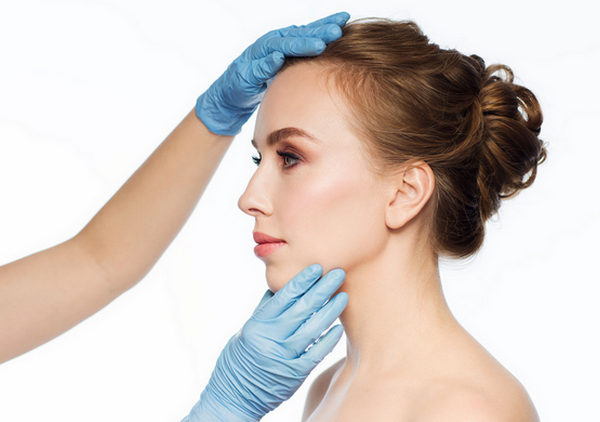Many migraine sufferers have their problems compounded when they don’t fully understand the difference between a migraine and a simple headache. Many people believe that a migraine is “just” a really bad headache, which is an oversimplification that leaves out many of the symptoms that make migraines a nearly unbearable malady for the millions of people who suffer from them.
The good news for migraine sufferers is that in the 1990s, Dr. Binder helped pioneer the effective use of
BOTOX treatment for migraines, helping many who suffer from chronic migraines to find the relief they desperately need.
Below is a quick rundown of the important differences between headaches and migraines. Included in the list are some of the most effective treatments for each, including BOTOX treatment for migraines.
What Exactly is a Headache?
Headaches are fairly common, and can affect anyone at any age. They can be a mild to intense pain that typically affects both sides of the head.
Headaches are typically most intense around the temples, forehead, and the back of the neck where the spine connects to the skull.
Headaches happen for a number of reasons, including sinus pressure, high stress, muscle tension, dehydration, poor nutrition, and many other causes.
What Exactly is a Migraine?
A migraine on the other hand is a severe headache that occurs
with a number of other acute symptoms that can include:
- Intense Nausea
- Severe pain behind one eye or ear
- Severe pain in the temples
- Seeing spots or flashing lights
- Sensitivity to light and/or sound
- Temporary vision loss
- Vomiting
Migraines range from moderate to severe on the pain scale and can make performing everyday tasks difficult or impossible. Many people end up seeking emergency room care for severe migraines, especially if they’ve never experienced one before.
Migraines are also more difficult to treat, and typically last longer than a tension or sinus headache. The extra symptoms such as nausea and vomiting can make it difficult to keep medicine down as well.
Differences Between a Migraine and a Headache
A migraine is not just a really bad headache. It is
an incapacitating neurological disease with neurological symptoms. In terms of the sufferer’s experience the primary difference between a migraine and a regular headache is the severity of the pain. A full-fledged migraine will involve pain that is much more severe than a typical headache.
Migraines can also present with severe nausea and/or a migraine “aura,” a neurological symptom which includes other sensory issues such as sensitivity to lights or sound, “pins and needles” sensation in the extremities, seeing flashing lights, and even depression and mood swings.
Treating a Headache
Headaches can typically be treated very effectively with home remedies or over-the-counter medication, and only rarely require professional medical help.
Some effective medications include:
- Acetaminophen
- Aspirin
- Ibuprofen
- Caffeine
There are a number of other treatments that have been shown to help as well, including neck stretching, relaxation techniques, meditation, and warm compresses/showers. These are all fairly effective for treating stress or tension headaches.
If you have a sudden severe or unusually persistent headache, contact your doctor immediately as this may be the sign of a serious condition such as migraines, stroke, or some other neurological issue.
Treating a Migraine
Migraine treatment is typically much more involved than the treatment for a headache. Typical headache treatments will be minimally effective at best, and will do almost nothing to prevent a migraine.
Unfortunately, there’s not much that can be done to relieve a migraine headache at home, so chronic migraine sufferers learn to identify their migraine triggers and do whatever they can to avoid them.
Common triggers include:
- Alcohol
- Caffeine
- Aged Cheeses or other Aged Foods
- Stress
Beyond the preventative measure of avoiding triggers, there are several medication options for treating migraines, but you’ll need to visit a doctor for them.
These include:
- Antinausea medicines, such as promethazine (Phenergan), chlorpromazine (Thorazine), or prochlorperazine (Compazine).
- Triptans, such as almotriptan (Axert), rizatriptan (Maxalt), or sumatriptan (Alsuma, Imitrex, and Zecuity).
BOTOX Treatment for Migraines
Finally, there have been several studies that have shown that BOTOX injections are extremely effective at preventing migraine headaches in chronic sufferers.
The exact mechanism of action is not yet fully understood. BOTOX has many cellular level inhibitory effects. It is believed that BOTOX actually inhibits pain pathways through multiple actions at the neurotransmitter level and pain fiber level.
BOTOX for migraines: Injection sites - To treat chronic migraines with BOTOX, your physician will make a series of small injections of BOTOX in specific areas across the frontal, temporal and glabellar regions of the forehead. In some instances, it is also injected into the back of the neck. The treatment takes about fifteen minutes.
BOTOX for migraines: Side effects - BOTOX has a considerably high safety profile for cosmetic and medical treatments.
BOTOX has been used by patients with various conditions for over 20 years in over 60 countries.
BOTOX has been approved by the FDA for the treatment of chronic migraines. The most common side effects are localized pain, tenderness or bruising at the site of injection. These side effects are normally local and transient in nature.
If you are interested in
BOTOX injections for migraine treatment, contact Doctor William J. Binder today! Call us at: (310) 858-6749 or use our
Contact Page.
Doctor Binder is the physician that pioneered BOTOX treatment for migraines, and is considered the foremost authority on the application of BOTOX for this purpose.



 3-D imaging via medical diagnostic tools such as MRIs and CT scanning is completely revolutionizing modern medicine.
As these medical devices become increasingly more precise at an accelerating rate, they are providing doctors with more finely-detailed, high resolution 3-D imaging of their patients with each passing year.
At the same time as the rapid increase in the sensitivity and resolution of these modern imaging devices, the processing power of digital computation has continued its exponential growth in price-performance year over year, allowing physicians to render and analyze the data from 3-D imaging all the more effectively.
Innovations in 3-D Imaging Resolution
By contrast to the incremental improvements of medical techniques over the centuries, and even to radiography during the decades of the 20th century, in recent years the improvements to medical imaging are coming fast and making a difference by orders of magnitude.
A little over a year ago researchers at MIT
3-D imaging via medical diagnostic tools such as MRIs and CT scanning is completely revolutionizing modern medicine.
As these medical devices become increasingly more precise at an accelerating rate, they are providing doctors with more finely-detailed, high resolution 3-D imaging of their patients with each passing year.
At the same time as the rapid increase in the sensitivity and resolution of these modern imaging devices, the processing power of digital computation has continued its exponential growth in price-performance year over year, allowing physicians to render and analyze the data from 3-D imaging all the more effectively.
Innovations in 3-D Imaging Resolution
By contrast to the incremental improvements of medical techniques over the centuries, and even to radiography during the decades of the 20th century, in recent years the improvements to medical imaging are coming fast and making a difference by orders of magnitude.
A little over a year ago researchers at MIT 




 Don’t Try to Cut Costs
Don’t Try to Cut Costs